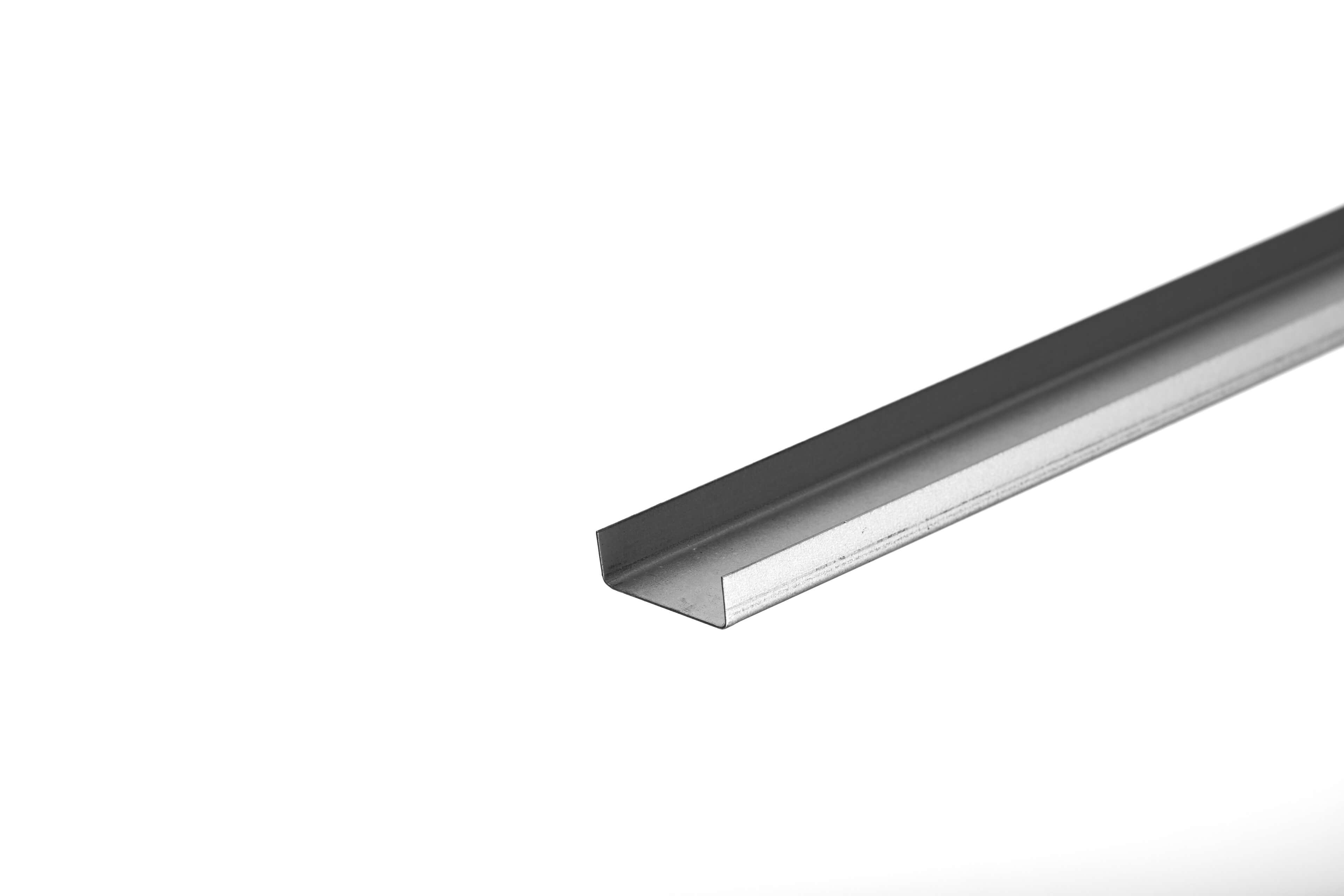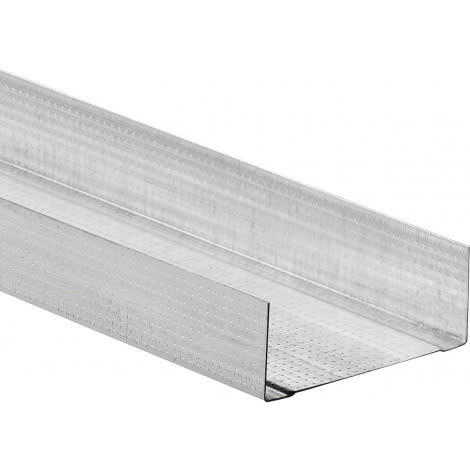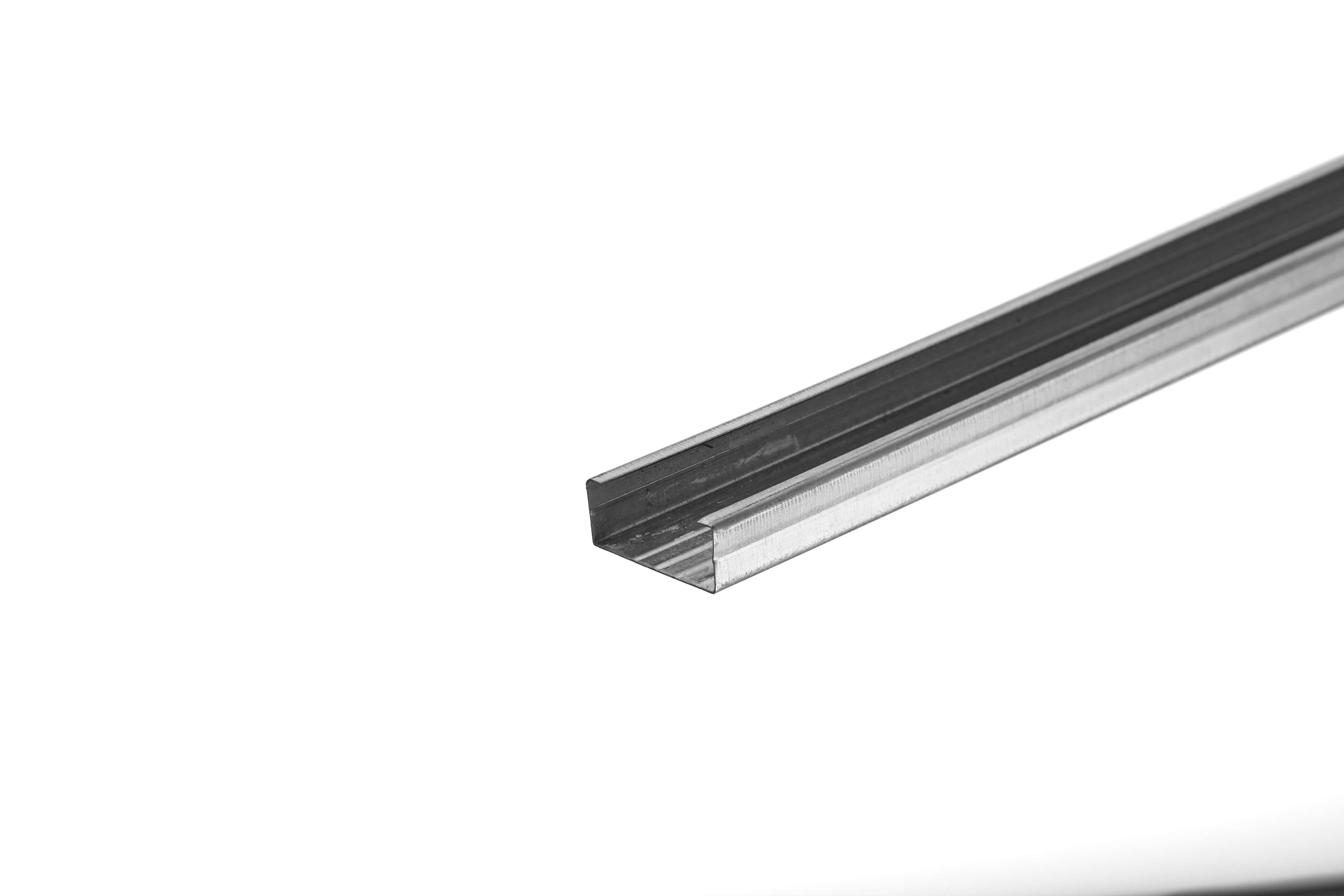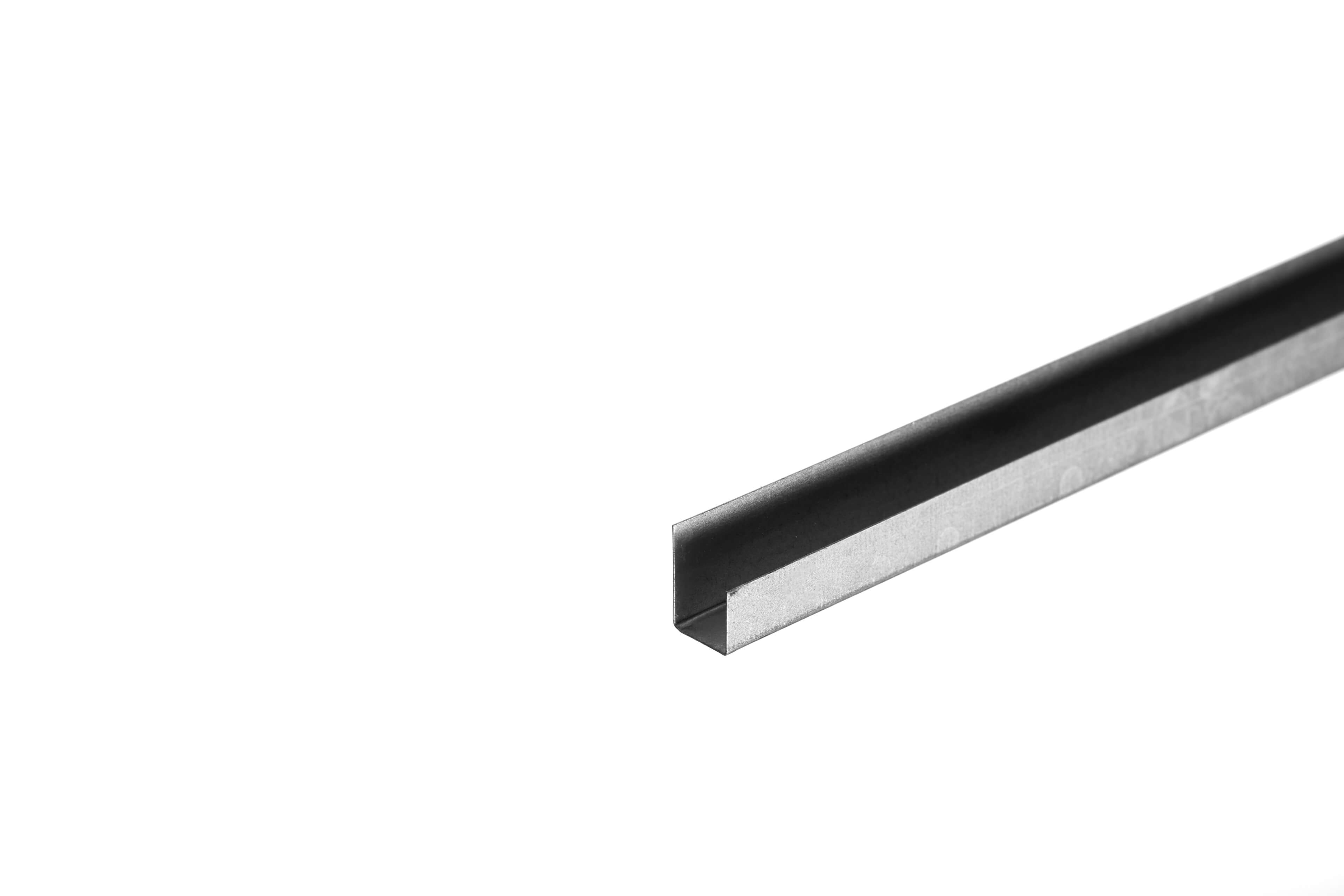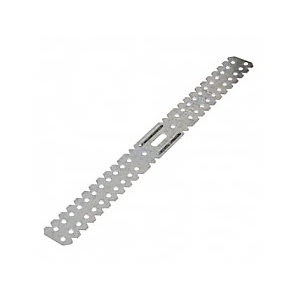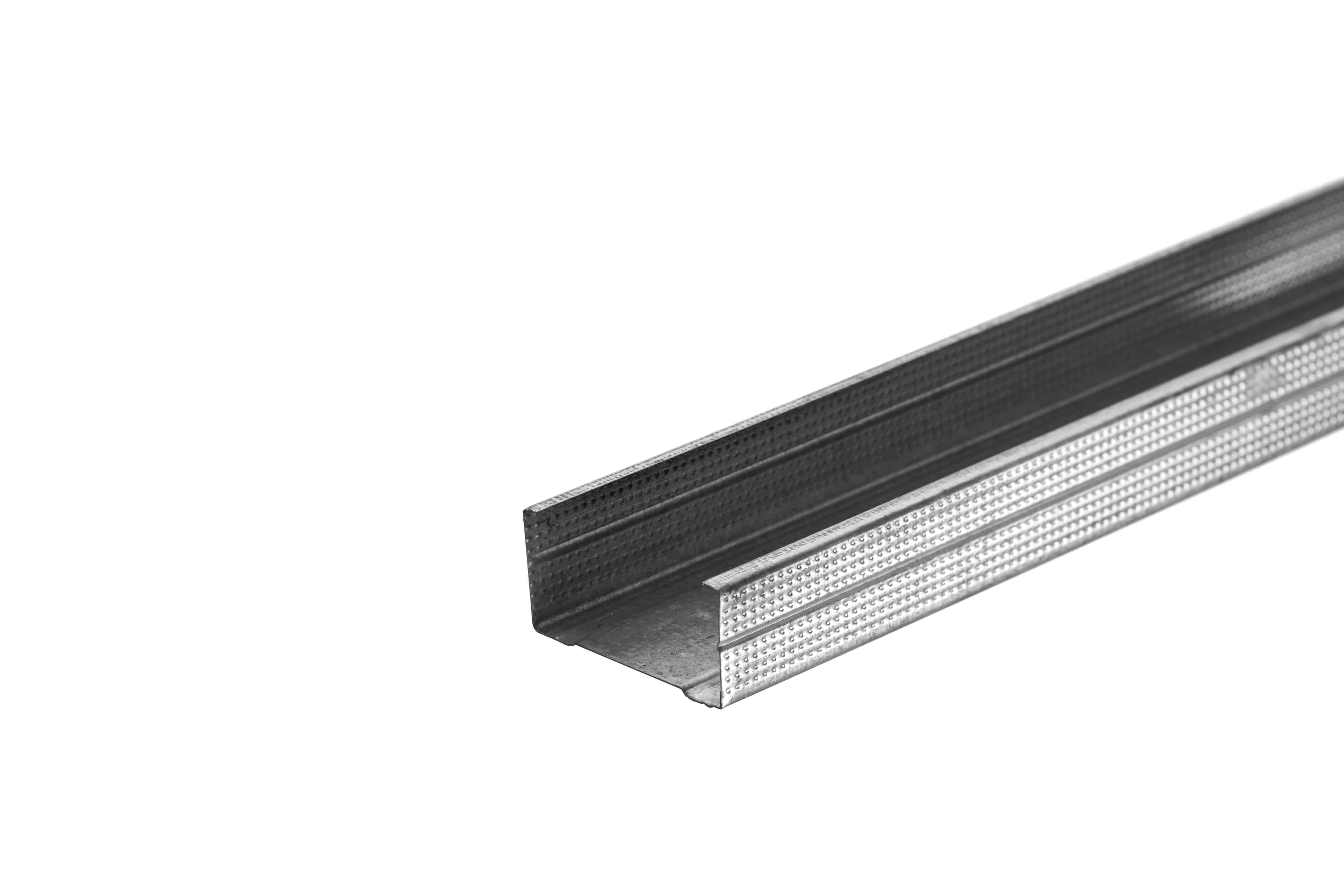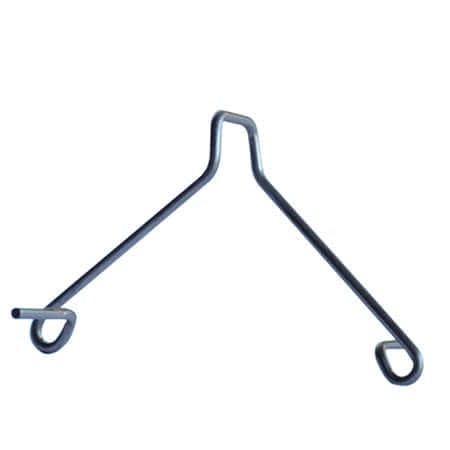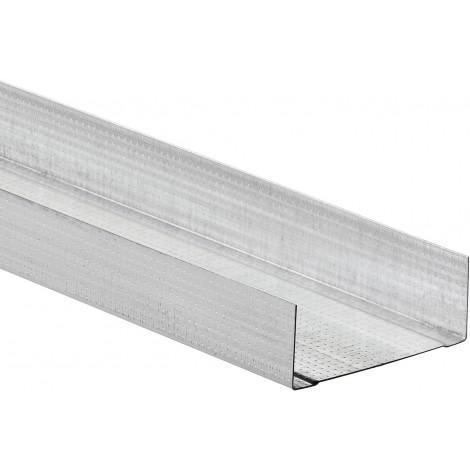Metal Studs & Ceilings
(46 Products)Whether you are after metal stud wall or ceiling products, we provide a variety of lightweight metal studs and ceiling systems, including U-track and studs for simple connection of your ceiling channels to your primary channels and a comprehensive range of galvanised steel clips to help finish the job. Our ceiling systems are ideal for workstations since they allow you to run unsightly electrics and other services in a secret nook above your ceiling.
What Are Metal Studs?
Metal studs are structural components used in construction to create the framework for walls, ceilings, and partitions.
They are an alternative to traditional wood studs and are typically made from galvanised steel or other types of metal.
Metal studs offer several advantages, such as being lightweight, non-combustible, and resistant to mould, pests, and rot.
They also provide consistent dimensions, which can help in achieving straight and level walls.
Metal connectors like brackets or clips are used to link studs, whereas screws and bolts are employed to secure them.
Benefits of Using Metal Studs Over Timber Studs
Metal Studs have long been a popular cost-effective, economical solution for plasterboard partition walls (although they are suitable for use in a wide range of applications). The advantages of metal stud and track systems over timber are numerous. Here are just a few examples to give you an idea of their many benefits:
- Strength - Metal is not as prone to warping or decaying as timber, nor is it susceptible to mould growth. While metal does rust, protecting the metal stud wall with a vapour barrier will ensure greater longevity.
- Fire resistance - Metal is a fire-resistant material whilst wood is extremely flammable. Metal stud partition walls constructed alongside fire-resistant plasterboard will provide greater levels of fire protection than conventional timber.
- Durability - Metal's strength does not deteriorate with time, unlike timber, allowing a structure to upkeep an efficient, long-term structural integrity.
- Pest resistance - metal requires no treatment to ensure its protection from termites and other insects.
Metal Stud Walls
When it comes to putting up internal walls, you can't go wrong with metal framing. Our lightweight drywall system is designed to produce easy-to-construct non-load-bearing walls and partitions.
Metal provides an easy-to-install, fire-resistant solution that works in conjunction with standard and performance plasterboard (such as British Gypsum, Knauf etc) in the construction of stud walls. Studs are cut into lengths ranging from 2.4m to 4.2m - in 600mm increments. This is to suit varying partition heights.
Metal stud partitioning is the most typical form of stud walls, especially in the commercial sector. Metal stud walls are used in a wide range of building projects, generally as a new partitioned wall within an existing structure. However, there may be areas where using both wood and metal studs is a good idea; for instance, when you are attaching electrical boxes between studs and door frames.
What Are the Main Components Of A Metal Stud Wall Frame?
Now that we're getting into the specifics of metal stud walls, you'll notice how distinct they are from timber frames. There are slight differences in a metal stud frame compared to a timber framing system, but they all operate on the same principles. The primary distinction between wood and metal studs is that metal studs require a few extra parts to complete the frame assembly.
The following are the central components of a metal stud wall:
- C Studs: These metal C-sections are the main metal studs in the wall and are friction fitted into the wall channel before being secured with screws.
- Channel Tracks: These play a similar structural role to floor plates seen in timber framing - channel tracks are purposed to fix vertical studs along the base of the wall.
- I Studs: The advantage of these studs is that they allow you to have a higher partition height while maintaining the exact same partitioning width.
- Resilient Bars: These bars optimise sound performance by de-coupling the plasterboard ceiling from its main structure, creating a "floating ceiling" that reduces the passage of airborne noise.
- U Studs: U Track is specifically purposed for installation in your floors or ceilings to create firm housing for C studs.
On our site, we have a category dedicated to each of these components (and all of our building materials), should you require any further details.
Metal U Track Installation
One of the key features of U Track is that it is lightweight and therefore easy to handle and install. U Track must be installed on both the floor and ceiling where you are building the wall linings. It is common to use standard track on the ceiling and deep track on the floor - as such, these are sometimes referred to as top and bottom track.
- Firstly, make sure the floor track and ceiling tracks are aligned with each other
- You should mark the areas first with chalk to ensure that they are positioned correctly
- Then, fix the steel tracks to the concrete using hex head concrete screws
- The screw should go through the metal and into the concrete - use a hammer drill for this
- Lengths of adjoining track can be installed together by overlapping the end of each length with the beginning of the next
- Once the track is in place, you can install Metal C Stud by friction fit and then screws
- Then you can fix your plasterboard and fill the space with acoustic insulation
For accessories and drywall screw products used in this process, see our Metal Accessories section.
How To Cut Metal Studs
Despite its many wins over timber, it is a touch more difficult to cut steel studs than it is to cut wood studs.
Cutting steel requires either a miter or circular saw with a metal cutting blade, along with tin snips.
The cutting process will almost certainly leave a few sharp edges here and there, so be sure to don some heavy work gloves and long sleeves.
Frequently Asked Metal Studs & Ceilings Questions
What Is The Difference Between A Metal Stud And Metal Track?
Studs and tracks are the two most important components in steel ceiling or wall framing. Without these two, the entire assembly would be impossible.
The track serves as both the top and bottom plates of the structure; creating a channel in which C Studs can be fixed. The two marry up to ensure that the assembly can work correctly.
Can Metal Studs Support Heavy Loads?
Yes, metal studs are designed to support considerable weight. However, it's important to follow manufacturer guidelines and engineering specifications when determining load-bearing capacities.
Can Metal Studs Be Used For Ceiling Installations?
Yes, metal studs are often used for constructing suspended ceilings. They provide a strong support structure for ceiling tiles, light fixtures, and other components.
Do Metal Studs Affect Insulation Efficiency?
Metal studs can conduct heat and cold more effectively than wood. Adding proper insulation materials helps mitigate this. Insulation can be placed between the studs to maintain energy efficiency.
What Is The Cost Difference Between Metal and Wood Studs?
The cost of metal studs can vary, but they tend to be slightly more expensive than wood studs. However, the durability and advantages they offer often justify the investment.










